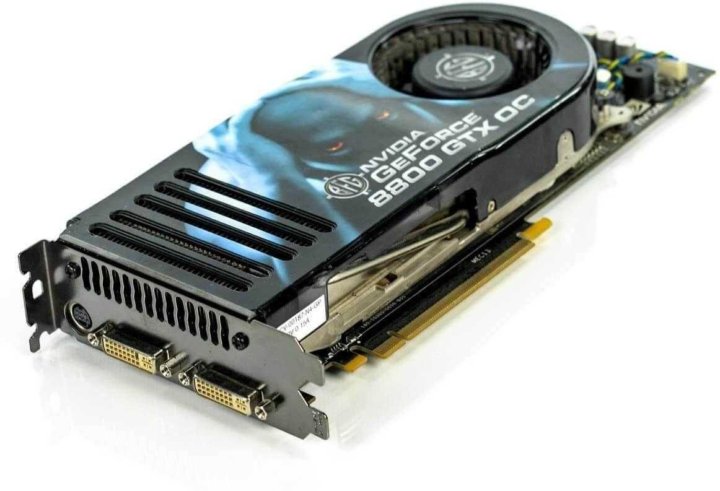GeForce 8800 GTX [in 1 benchmark]
NVIDIA
GeForce 8800 GTX
Buy
- Interface PCIe 1.0 x16
- Core clock speed 576 MHz
- Max video memory 768MB
- Memory type GDDR3
- Memory clock speed 900MHz
- Maximum resolution
Summary
NVIDIA started GeForce 8800 GTX sales 8 November 2006 at a recommended price of $599. This is Tesla architecture desktop card based on 90 nm manufacturing process and primarily aimed at office use. 768 MB of GDDR3 memory clocked at 0.9 GHz are supplied, and together with 384 Bit memory interface this creates a bandwidth of 86.4 GB/s.
Compatibility-wise, this is dual-slot card attached via PCIe 1.0 x16 interface. Its manufacturer default version has a length of 270 mm. Two 6-pin power connectors are required, and power consumption is at 155 Watt.
It provides poor gaming and benchmark performance at
1.53%
of a leader’s which is NVIDIA GeForce RTX 4090.
GeForce
8800 GTX
vs
GeForce RTX
4090
General info
Some basic facts about GeForce 8800 GTX: architecture, market segment, release date etc.
| Place in performance rating | 858 | |
| Value for money | 0.79 | |
| Architecture | Tesla (2006−2010) | |
| GPU code name | G80 | |
| Market segment | Desktop | |
| Release date | 8 November 2006 (16 years ago) | |
| Launch price (MSRP) | $599 | |
| Current price | $78 (0.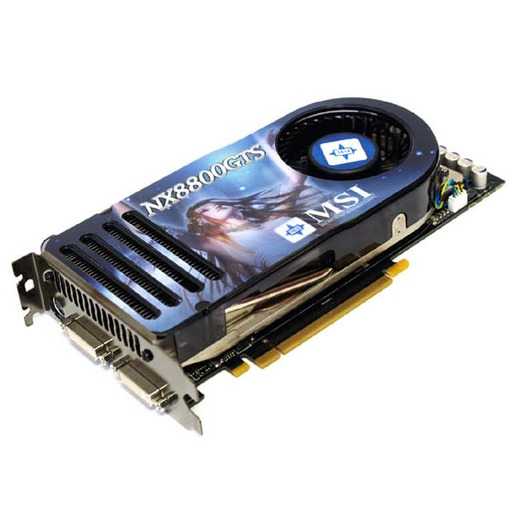 1x MSRP) 1x MSRP) |
of 49999 (A100 SXM4) |
Value for money
To calculate the index we compare the characteristics of graphics cards against their prices.
- 0
- 50
- 100
Technical specs
GeForce 8800 GTX’s general performance parameters such as number of shaders, GPU base clock, manufacturing process, texturing and calculation speed. These parameters indirectly speak of GeForce 8800 GTX’s performance, but for precise assessment you have to consider its benchmark and gaming test results.
| Pipelines / CUDA cores | 128 | of 18432 (AD102) |
| CUDA cores | 575 | |
| Core clock speed | 576 MHz | of 2610 (Radeon RX 6500 XT) |
| Number of transistors | 681 million | of 14400 (GeForce GTX 1080 SLI Mobile) |
| Manufacturing process technology | 90 nm | of 4 (GeForce RTX 4080 Ti) |
| Thermal design power (TDP) | 155 Watt | of 900 (Tesla S2050) |
| Texture fill rate | 36.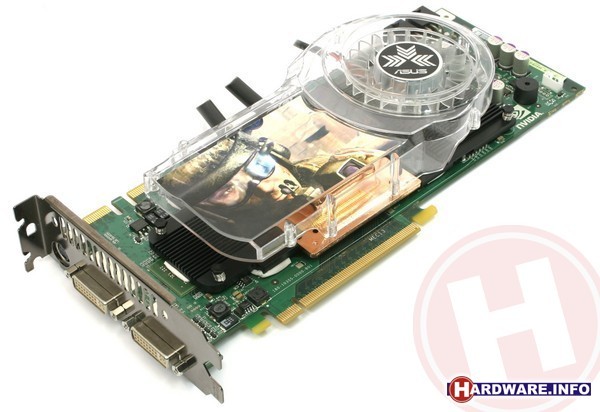 8 billion/sec 8 billion/sec |
of 961.9 (Radeon RX 7900 XTX) |
| Floating-point performance | 345.6 gflops | of 16384 (Radeon Pro Duo) |
Compatibility, dimensions and requirements
Information on GeForce 8800 GTX’s compatibility with other computer components. Useful when choosing a future computer configuration or upgrading an existing one. For desktop graphics cards it’s interface and bus (motherboard compatibility), additional power connectors (power supply compatibility).
| Interface | PCIe 1.0 x16 | |
| Length | 270 mm | |
| Width | 2-slot | |
| Supplementary power connectors | 2x 6-pin | |
| SLI options | + |
Memory
Parameters of memory installed on GeForce 8800 GTX: its type, size, bus, clock and resulting bandwidth. Note that GPUs integrated into processors have no dedicated memory and use a shared part of system RAM instead.
Note that GPUs integrated into processors have no dedicated memory and use a shared part of system RAM instead.
| Memory type | GDDR3 | |
| Maximum RAM amount | 768 MB | of 128 (Radeon Instinct MI250X) |
| Memory bus width | 384 Bit | of 8192 (Radeon Instinct MI250X) |
| Memory clock speed | 900 MHz | of 21000 (GeForce RTX 3090 Ti) |
| Memory bandwidth | 86.4 GB/s | of 14400 (Radeon R7 M260) |
Video outputs and ports
Types and number of video connectors present on GeForce 8800 GTX. As a rule, this section is relevant only for desktop reference graphics cards, since for notebook ones the availability of certain video outputs depends on the laptop model, while non-reference desktop models can (though not necessarily will) bear a different set of video ports.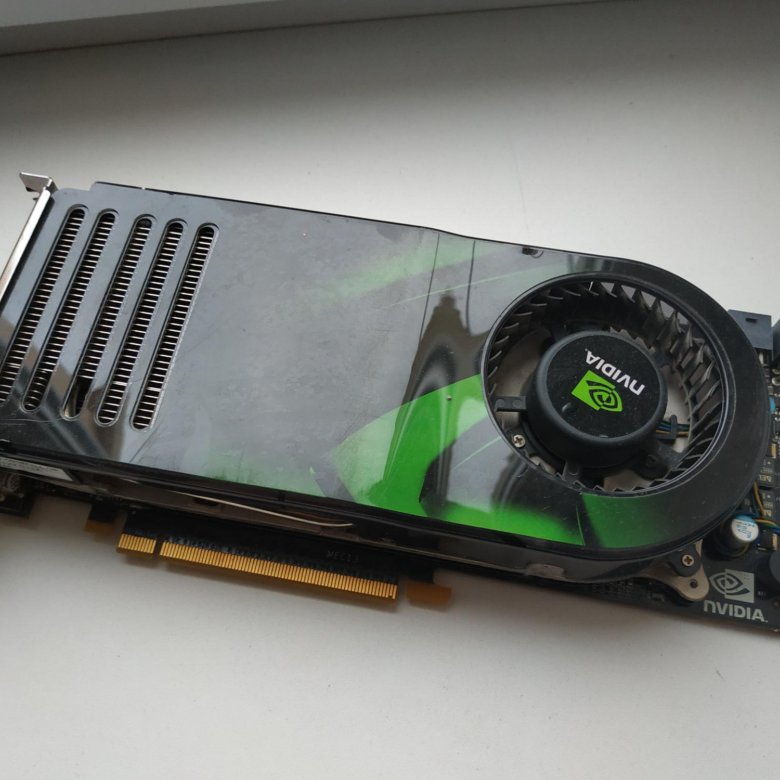
| Display Connectors | 2x DVI, 1x S-Video |
API support
APIs supported by GeForce 8800 GTX, sometimes including their particular versions.
| DirectX | 11.1 (10_0) | |
| Shader Model | 4.0 | |
| OpenGL | 3.3 | of 4.6 (GeForce GTX 1080 Mobile) |
| OpenCL | 1.1 | |
| Vulkan | N/A | |
| CUDA | + |
Benchmark performance
Non-gaming benchmark performance of GeForce 8800 GTX. Note that overall benchmark performance is measured in points in 0-100 range.
Overall score
This is our combined benchmark performance rating. We are regularly improving our combining algorithms, but if you find some perceived inconsistencies, feel free to speak up in comments section, we usually fix problems quickly.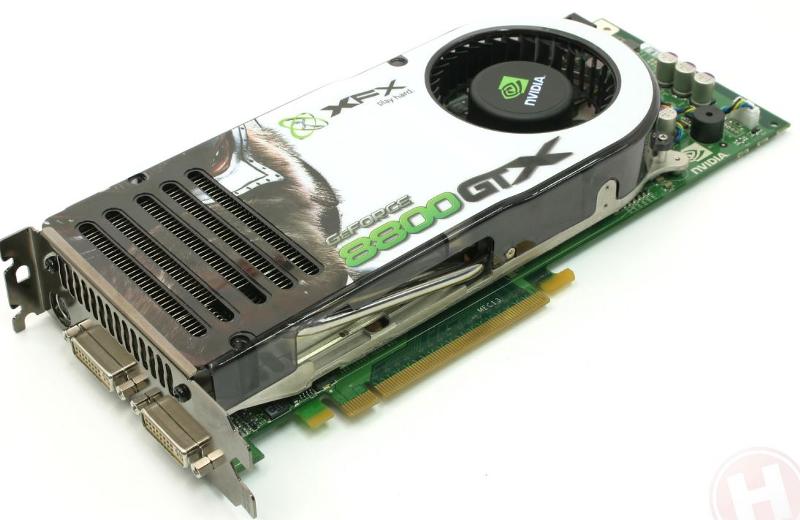
8800 GTX
1.53
- Passmark
Passmark
This is probably the most ubiquitous benchmark, part of Passmark PerformanceTest suite. It gives the graphics card a thorough evaluation under various load, providing four separate benchmarks for Direct3D versions 9, 10, 11 and 12 (the last being done in 4K resolution if possible), and few more tests engaging DirectCompute capabilities.
Benchmark coverage: 26%
8800 GTX
597
Game benchmarks
Let’s see how good GeForce 8800 GTX is for gaming. Particular gaming benchmark results are measured in frames per second. Comparisons with game system requirements are included, but remember that sometimes official requirements may reflect reality inaccurately.
Relative perfomance
Overall GeForce 8800 GTX performance compared to nearest competitors among desktop video cards.
Intel HD Graphics P4600
101.31
NVIDIA GeForce GT 720A
100.65
NVIDIA GeForce 8800 GTS 512
100
NVIDIA GeForce 8800 GTX
100
NVIDIA GeForce GT 430
98.69
NVIDIA GeForce GT 820M
98.69
AMD Radeon R5 A240
96.08
AMD equivalent
The nearest GeForce 8800 GTX’s AMD equivalent is Radeon HD 7570, which is faster by 2% and higher by 7 positions in our performance rating.
Radeon HD
7570
Compare
Here are some closest AMD rivals to GeForce 8800 GTX:
AMD FireStream 9170
108.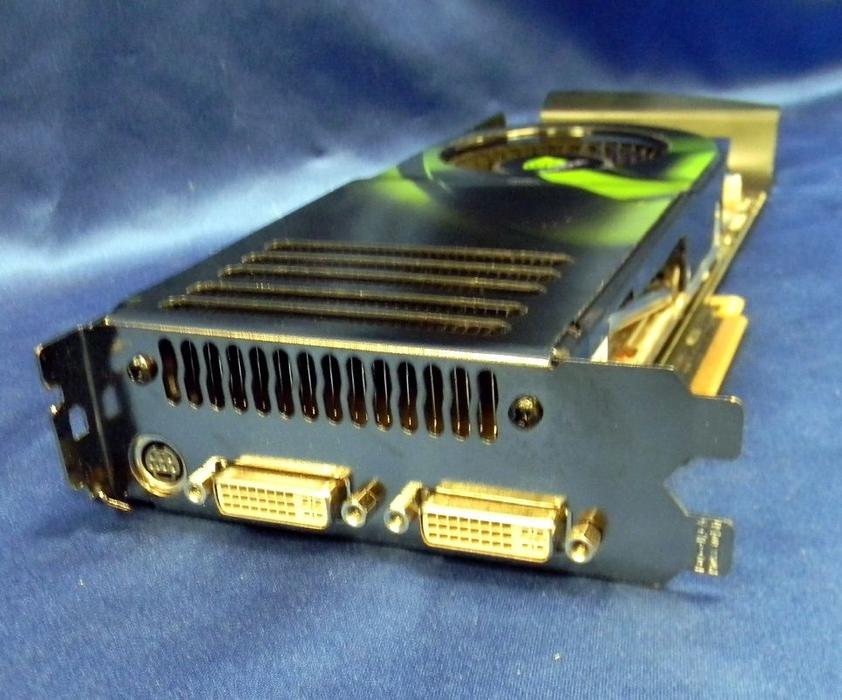 5
5
ATI Radeon HD 2900 PRO
105.23
AMD Radeon HD 7570
101.96
NVIDIA GeForce 8800 GTX
100
AMD Radeon R5 A240
96.08
AMD Radeon HD 7650A
95.42
ATI Radeon HD 3870
95.42
Similar GPUs
Here is our recommendation of several graphics cards that are more or less close in performance to the one reviewed.
GeForce
8800 GTS 512
Compare
GeForce GTS
250
Compare
Radeon HD
3870
Compare
Radeon HD
2900 PRO
Compare
GeForce
8800 Ultra
Compare
FireStream
9170
Compare
Recommended processors
These processors are most commonly used with GeForce 8800 GTX according to our statistics.
Core 2
Quad Q6600
4.6%
Core 2
Duo E8400
3.1%
Core 2
Duo E8500
2.3%
Core 2
Quad Q6700
2.3%
Core 2
Duo E7500
2.3%
Core 2
Duo E6750
2.3%
Core 2
Quad Q8400
2.3%
Core i3
3220
2.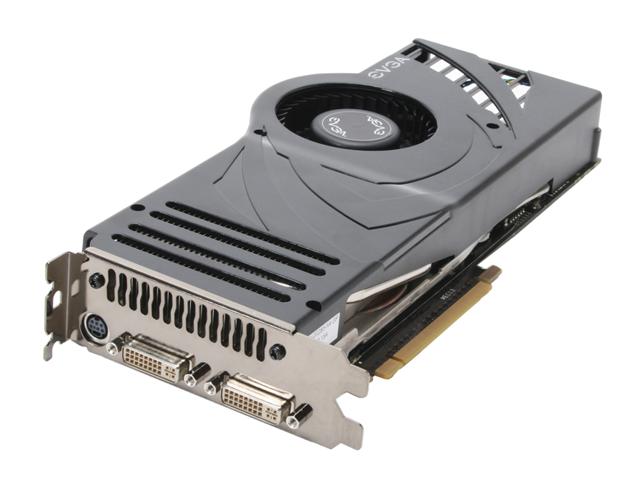 3%
3%
Core i3
1115G4
2.3%
Core i3
2100
1.5%
User rating
Here you can see the user rating of the graphics card, as well as rate it yourself.
Questions and comments
Here you can ask a question about GeForce 8800 GTX, agree or disagree with our judgements, or report an error or mismatch.
Please enable JavaScript to view the comments powered by Disqus.
NVIDIA GeForce 8800 GTX video card benchmark result
Unsupported benchmark. Driver has not been tested or approved.
Result details
Result details
Valid result
Similar Systems Scores
Detailed scores
Settings
3DMark06
- Test Version
- 1.
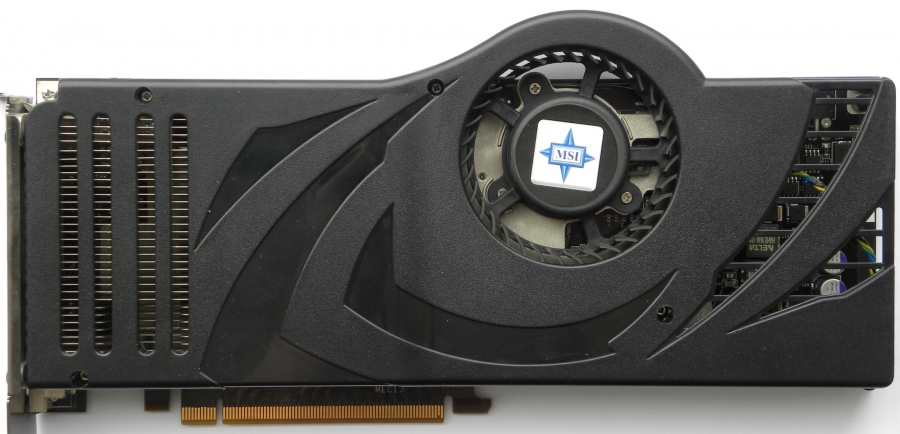 1
1 - SystemInfo Version
- 3.12
- Date
- November 7 2007
- ID
- 3675132
The result is hidden and will not be shown for example on leaderboards or search.
- Name
-
Untitled
Cancel
- Description
-
Cancel
- User
-
user#173554
Graphics Card
- Graphics Card
-
NVIDIA GeForce 8800 GTX
- Vendor
- NVidia Corporation
- # of cards
- 1
- SLI / CrossFire
- Off
- Memory
- 768 MB
- Clock frequency
- 108 MHz (0 MHz)
- Average clock frequency
- N/A
- Memory clock frequency
- 337 MHz (0 MHz)
- Average memory clock frequency
- N/A
- Average temperature
- N/A
- Driver version
- 6.
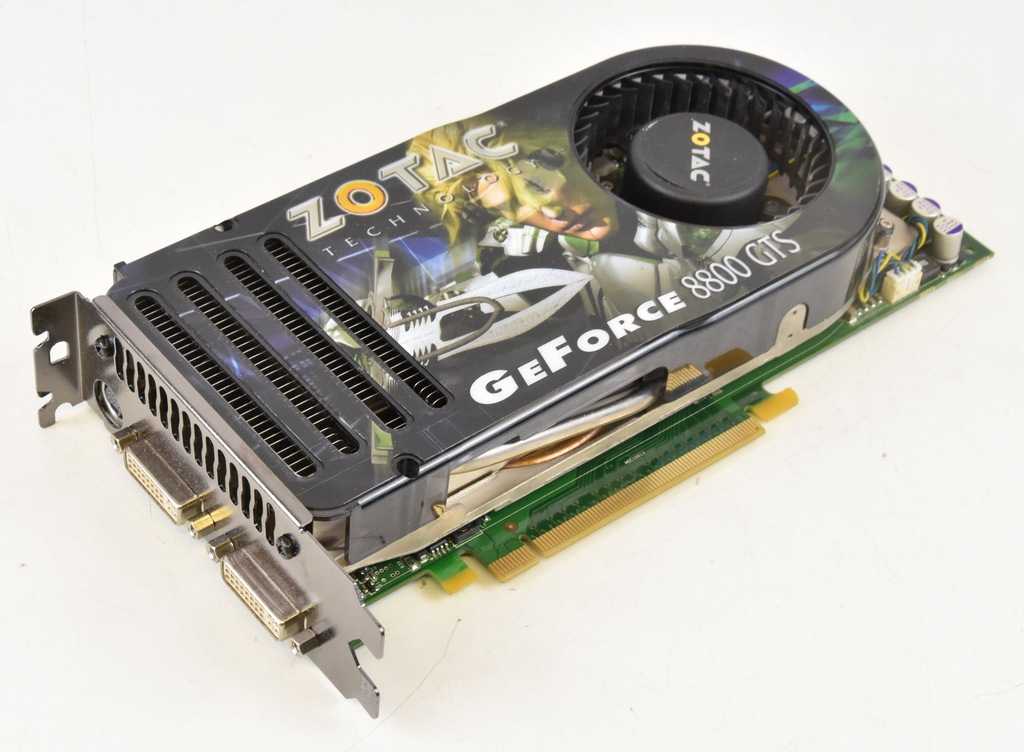 14.11.6375
14.11.6375 - Driver status
- Approved
Processor
- Processor
-
Intel Core 2 Extreme Processor QX9650
- Clock frequency
- 0 MHz (4,000 MHz)
- Average clock frequency
- N/A
- Average temperature
- N/A
- Physical / logical processors
- 1 / 4
- # of cores
- 4
- Package
- LGA775
- Manufacturing process
- 45 nm
- TDP
- 130 W
General
- Operating system
- 32-bit Microsoft Windows XP (5.1.2600)
- Motherboard
- Memory
- 2,032 MB
- VBS status
- Unknown
- HVCI status
- Unknown
ten years later (page 6)
Benchmarking
3DMark 2001 SE
3DMark2001SE
Default score
Please enable JavaScript to see graphs
If we count from the release date of the first revision of this benchmark (without SE), then it is already more than fifteen years old and, of course, it does not reflect the real performance of video cards for a long time.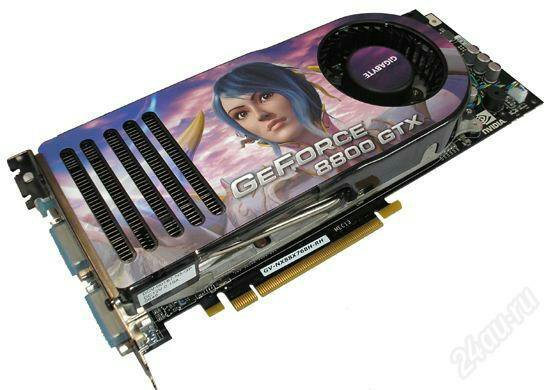 For example, you may get the false impression that the 6800 Ultra is only 1.8x slower than the GTX 285, which is far from the case.
For example, you may get the false impression that the 6800 Ultra is only 1.8x slower than the GTX 285, which is far from the case.
However, it can be noted that the 8800 GTX and 9800 GTX are almost on par, and the 8800 Ultra Extreme is slightly ahead of the 9800 GTX+ 765M.
3DMark 03
3DMark03
Default score
Please enable JavaScript to see graphs
1920 x 1200, AA4, AF16 score
Please enable JavaScript to see graphs
First DirectX 9-Futuremark benchmark demonstrates a greater difference in the performance of the considered video cards, which is especially noticeable at high resolutions when anti-aliasing and anisotropic filtering are activated. If at standard settings the GTX 285 gains only four times more points than the 6800 Ultra, then in the highest quality mode it is already almost seven times faster.
Interestingly, in the standard mode the 8800 GTX and 8800 Ultra Extreme are somewhat inferior to the 9800 GTX and 9800 GTX+, but noticeably outperform their opponents when the resolution is increased in the maximum image quality mode.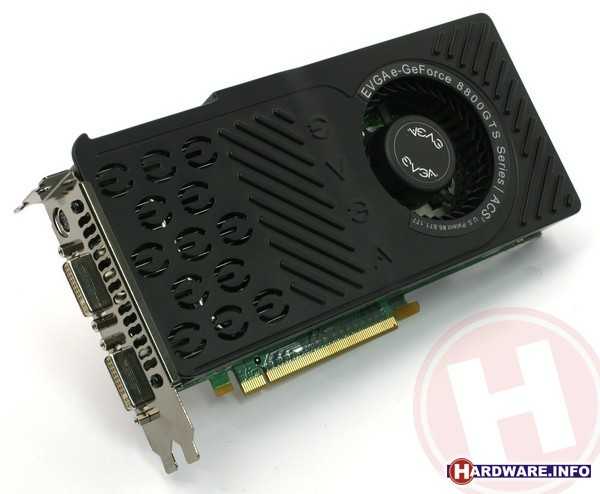 The obvious reason for this behavior is the large bandwidth of the memory bus of video cards with the G80 graphics processor.
The obvious reason for this behavior is the large bandwidth of the memory bus of video cards with the G80 graphics processor.
recommendations
3DMark 05
3DMark 05
Default score
Please enable JavaScript to see graphs
1920 x 1200, AA4, AF16 score
Please enable JavaScript to see graphs
In a newer version of the benchmark, solutions based on G92 and G92b look more profitable than their opponents with a G80 GPU, and even in the most difficult mode, the 8800 GTX fails to catch up 9800 GTX. In turn, the 8800 Ultra Extreme is saved by fast memory — albeit slightly, but it still outperforms the 9800 GTX+ 765M, although at standard settings the difference between these video cards was an impressive 15.7% in favor of the latter.
3DMark 06
3DMark 06
Default score
Please enable JavaScript to see graphs
In the final benchmark of the 3DMark series, which does not require DirectX 10 support, the scores of the 6800 Ultra and GTX 285 in standard mode differ by 6. 7 times. However, it should be taken into account that the final result in 3DMark 06 is also affected by the results of processor tests, so in this case it would be most correct to compare the results of graphics subtests.
7 times. However, it should be taken into account that the final result in 3DMark 06 is also affected by the results of processor tests, so in this case it would be most correct to compare the results of graphics subtests.
3DMark 06
Default SM2.0 score
Please enable JavaScript to see graphs
Default HDR/SM3.0 score
Please enable JavaScript to see graphs
In the 3DMark 06 graphics subtests, the GTX 285 is already 7.15-8.37 times faster than the 6800 Ultra, while the 8800 Ultra Extreme lags behind the 9800 GTX a bit.
The SM2.0 and HDR/SM3.0 scoring charts really show how much of a jump in performance the 8800 GTX has made. Even at a resolution of 1280 x 1024, without activating anti-aliasing and filtering, the new product is ahead of the previous single-processor flagship 7900 GTX more than doubled. To be fair, it should be noted that at one time the difference between the 6800 Ultra and FX 5950 Ultra in 3DMark 05 was more impressive.
Due to architectural limitations, anti-aliasing and HDR cannot be used simultaneously on GeForce 6 and GeForce 7 video cards, the most difficult mode, which allows comparing DirectX 9 and DirectX 10 generation Nvidia video cards in all 3DMark 06 subtests, is the anisotropic filtering mode.
3DMark 06
1920 x 1200, AF16 – SM2.0 score
Please enable JavaScript to see graphs
1920 x 1200, AF16 — HDR/SM3.0 score
Please enable JavaScript to see graphs
At 1920 x 1200 resolution and 16X anisotropic filtering, the difference between the 6800 Ultra 512MB and GTX 285 reaches 11 times, and let me remind you, less than five years have passed between the release of these video cards. I wonder what will be the difference in current benchmarks between the GTX 1080 and GTX 680?
As for the comparison of 8800 Ultra Extreme and 9800 GTX, in the overall standings 3DMark 06 video cards are on a par, while 9800 GTX+ remains out of reach.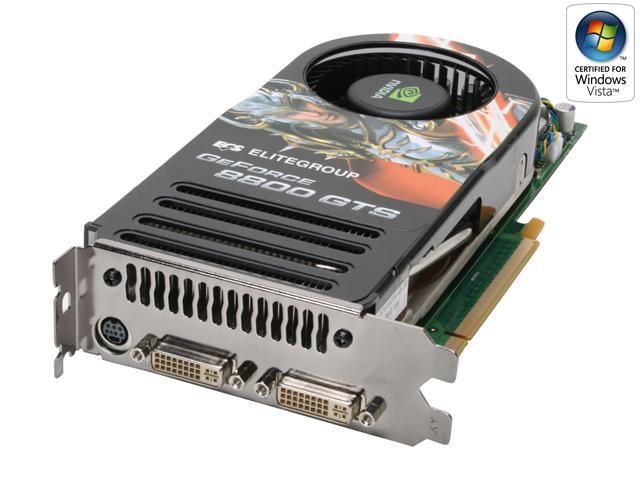
3DMark 06
1920 x 1200, AF16 score
Please enable JavaScript to see graphs
3DMark Vantage
3D Mark Vantage
Performance score
Please enable JavaScript to see graphs
Performance GPU score
Please enable JavaScript to see graphs
Extreme score
Please enable JavaScript to see graphs
Extreme GPU score
Please enable JavaScript to see graphs
DirectX 10-benchmark 8800 Ultra Extreme is noticeably faster than 9800 GTX+ 765M, and the 8800 GTX frequencies are already enough to slightly outperform the 9800 GTX. And even the GTX 285 is only 60-68% faster than the 8800 Ultra Extreme in terms of GPU score.
Unigine Heaven Benchmark
Unigine Heaven 4.
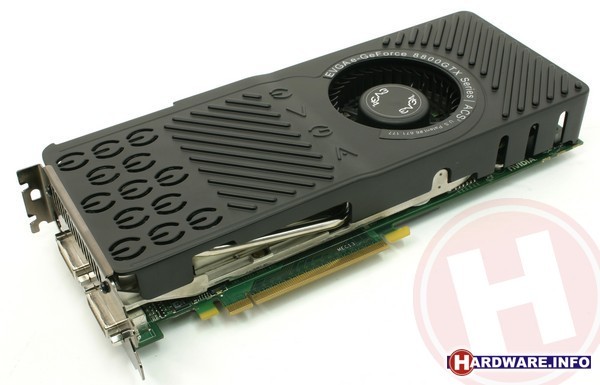 0
0
Basic DX9 score
Please enable JavaScript to see graphs
The results in this test look a little odd. If the superiority of the 8800 Ultra Extreme over the 9-series models800 does not seem surprising, the modest advantage of the GTX 280 and GTX 285 over their predecessors raises some doubts about the adequacy of the results.
Subscribe to our channel in Yandex.Zen or telegram channel @overclockers_news — these are convenient ways to follow new materials on the site. With pictures, extended descriptions and no ads.
NVIDIA GeForce 8800 GTX
Specifications
Drivers
Price
| Name: | NVIDIA GeForce 8800 GTX |
| Series: | GeForce 8 |
| GPU model: | G80-300 (G80) |
| CUDA cores: | 128 |
| Base clock : | 575 MHz |
| Memory: | 768 Mb GDDR3 (384-bit) |
The NVIDIA GeForce 8800 GTX video card is based on 90 nm process technology and based on the G80-300 (G80) GPU.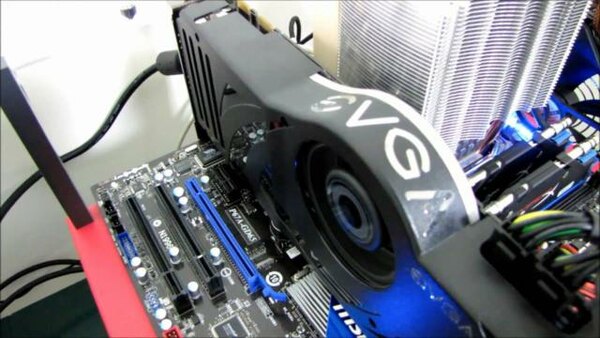
The card supports Directx 10. NVIDIA has placed 768 megabytes of GDDR3 RAM, which is connected using a 384-bit interface.
The graphics processor runs at 575 MHz. The number of CUDA cores is 128.
The power consumption of the video card is 155W, and the recommended power supply is 500W.
NVIDIA GeForce 8800 GTX supports Microsoft DirectX 10 and OpenGL 3.3.
Specifications for NVIDIA GeForce 8800 GTX
| GPU specifications: | |
|---|---|
| Model: | NVIDIA GeForce 8800 GTX |
| Series: | GeForce 8 |
| GPU model: | G80-300 (G80) |
| Process: | 90nm |
| CUDA cores: | 128 |
| Streaming Multiprocessors (SMs): | 16 |
| Texture units (TMUs): | 32 |
| Base clock: | 575MHz |
| Number of transistors: | 681 million |
| Memory specifications: | |
|---|---|
| Memory capacity: | 768 Mb |
| Memory type: | GDDR3 |
| Memory bus: | 384-bit |
| Memory clock: | 900MHz |
| Texture Fill Rate: | 18.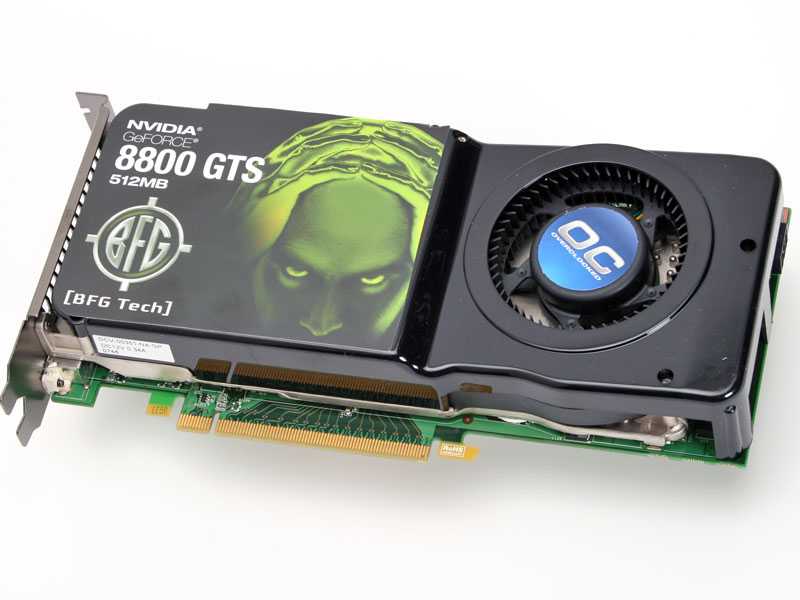 4 GTexel/s 4 GTexel/s |
| Display support: | |
|---|---|
| Maximum digital resolution: | 2560×1600 |
| Maximum VGA resolution: | 2048×1536 |
| Standard connectors: | DVI-I DualLink, S-Video |
| Multi-monitor support: | Yes |
| HDMI: | Yes, Via adapter |
| Audio input for HDMI: | SPDIF |
| Thermal characteristics: | |
|---|---|
| Maximum GPU temperature: | 105℃ |
| Energy consumption (TDP): | 155 W |
| Recommended Nutritional Requirements: | 500 W |
| Additional power connectors: | Two 6-pin |
| Graphics card dimensions: | |
|---|---|
| Height: | 11. 1 cm 1 cm |
| Length: | 27 cm |
| Width: | 2 slots |
| Technologies and capabilities: | |
|---|---|
| CUDA: | Yes |
| SLI: | Yes |
| Purevideo: | Yes |
| 3D games: | Yes |
| DirectX: | 10 |
| OpenGL: | 3.3 |
| Tire: | PCI-Express 1.0 x16 |
| Support OS: | Microsoft Windows 7-10, Linux, FreeBSDx86 |
Please note: the table shows the reference characteristics of the video card, they may vary by different manufacturers.
New drivers for NVIDIA GeForce 8800 GTX
Download drivers for video card NVIDIA GeForce 8800 GTX
Operating system:
Download (238.